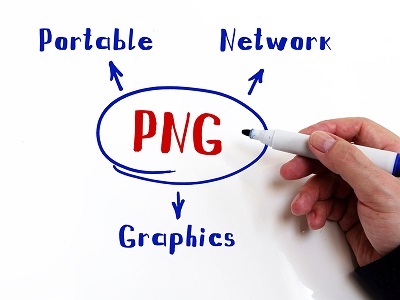
 Data Structure
Data Structure Networking
Networking RDBMS
RDBMS Operating System
Operating System Java
Java MS Excel
MS Excel iOS
iOS HTML
HTML CSS
CSS Android
Android Python
Python C Programming
C Programming C++
C++ C#
C# MongoDB
MongoDB MySQL
MySQL Javascript
Javascript PHP
PHP
- Selected Reading
- UPSC IAS Exams Notes
- Developer's Best Practices
- Questions and Answers
- Effective Resume Writing
- HR Interview Questions
- Computer Glossary
- Who is Who
PNG: Portable Network Graphics
Introduction
An effective file format for lossless, portable, and well-compressed bitmap storage is Portable Network Graphics (PNG). It may be read and exchanged between computers with ease and requires little storage capacity. The GIF format can be replaced with the Portable Network Graphics format, which can also be used in place of the TIFF format for many common applications.

The Portable Network Graphics format is fully streamable and has a progressive display option, making it ideal for online viewing, such as on the Web. All formats and functionality may not be supported by all web browsers. If you want to employ animated GIFs, picture maps, transparent backdrops, or image interlacing in your Web sites, you can export photos to the Portable Network Graphics file format.
When graphics are exported in the Portable Network Graphics format, they are changed into bitmaps that may be used in Microsoft Office products and desktop publishing software. Additionally, image-editing applications like Adobe Photoshop and Corel PHOTO-PAINT allow you to edit Portable Network Graphics. For use on the Internet, you can also save images in GIF and JPEG formats. When unsure about the best format to use when publishing a photograph on the web. Learn more about PNG in the following article.
History of PNG
A Thomas Boutell-led Internet working group was first established in 1994 to start developing the PNG format. This group finished developing PNG. The GIF format was already well-known at the time. Their objectives were to enhance color support and offer an image format without the requirement for a patent license.
The GIF format was owned by Unisys and licensing or other legal issues had to be taken into account when using it in image-handling software. Web users were free to create, read, and send GIF files, but they were unable to create the software that created them without a contract with Unisys.
On January 4, 1995, the initial PNG format was released, and within a week, the majority of the key PNG features had been suggested and approved. The team generated seven significant drafts over the following three weeks.
All of the specifications were complete and approved by the beginning of March 1995. The initial PNG specification was published as a W3C recommendation in October 1996. In 1998, 1999, and 2003, when it was adopted as an international standard, more updates were provided.
File Format of PNG
Gamma correction enables fine-tuning of the color brightness of the image as required by particular display makers.
True color, as well as the palette and grayscale formats made available by the GIF, can be used to preserve images.
In addition to making a color translucent, opacity?the measure of transparency?can also be adjusted.
Faster than interlaced GIF format and supports image interlacing.
Uses of PNG
The PNG format can be used for the following activities
Highly manipulated pictures.
Creation of blueprints, graphs, charts, and other visuals
Creation of images using line art, such as comics, sketches, and illustrations.
Text that has been scanned, such as newspapers, articles, letters, etc.
Advantages of PNG
There are some following advantages to PNG
PNG is used for generating cartoons, illustrations, graphs, charts, logos, and more.
Multiple colors and patterns are supported by PNG files.
The PNG format is ideal for editing images since it has solid colors and small details.
In PNG, the compression is lossless.
Using PNG, it is simple to scan text from documents like letters and journals.
Digital image compression is also supported by PNG.
Transparency is also supported by the PNG format.
Conclusion
In this article, we have learned about the PNG format and its history, PNG Format was developed around the beginning of 1995. GIF is limited to 256 colors, and this limitation helped PNG grow and was the primary reason behind its adoption. It is also understandable from the above sections that the format has several benefits over other similar types of file formats like the GIF or the JPEG and also covers the uses and advantages of PNG files.
FAQS
Q1. What is the highest resolution available?
Ans: Relating to 8K Resolution The greatest monitor resolution currently provided is 8K, which has a resolution of 7680 x 4320 pixels. Since the technology is so new, 8K UHD televisions and broadcasts are just now becoming widely available in the marketplace.
Q2. Does Portable Network Graphics support animation?
Ans: The PNG format, unlike the GIF89a, cannot include multiple images, hence it cannot enable animation. However, the PNG is described as "extensible." Software developers will be able to create PNG variations that can hold many scriptable images.
Q3. How is PNG better than JPEG?
Ans: The primary benefit of PNG over JPEG is its lossless compression, which prevents quality degradation when it is opened and saved several times. PNG is also adept at handling complex, high-contrast pictures.

